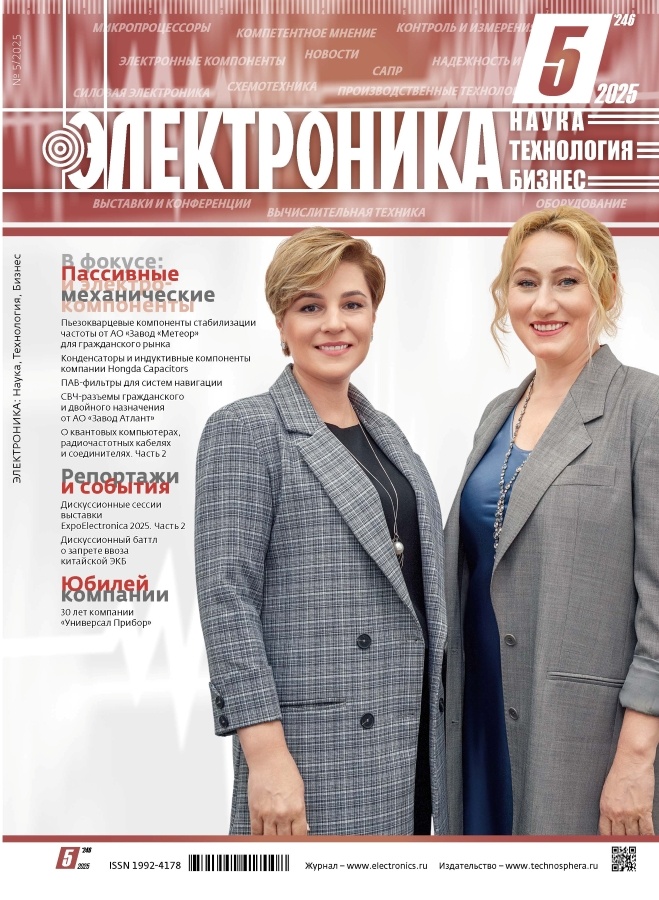6G technology development aspects
- Авторлар: Makushin M.1
-
Мекемелер:
- НОБ «Военные науки и оборонная промышленность» БРЭ
- Шығарылым: № 5 (2025)
- Беттер: 124-134
- Бөлім: Information and telecommunication systems
- URL: https://journals.eco-vector.com/1992-4178/article/view/686481
- DOI: https://doi.org/10.22184/1992-4178.2025.246.5.124.134
- ID: 686481
Дәйексөз келтіру
Аннотация
The deployment of 6G communication networks is expected in the early 2030s; in 2017 the IEEE 802.15.3d standard (300 GHz range) was approved and work on improving it continues. The article discusses the architectures and main technologies required for the deployment of 6G networks and the problems of their implementation.
Толық мәтін
Авторлар туралы
M. Makushin
НОБ «Военные науки и оборонная промышленность» БРЭ
Хат алмасуға жауапты Автор.
Email: kys@electronics.ru
ведущий научный редактор
РесейӘдебиет тізімі
- Макушин М. Аспекты развития 6G-сетей, часть 1 // ЭЛЕКТРОНИКА: Наука, Технология, Бизнес. 2024. №5 (00236). С. 122–131.
- Макушин М. Аспекты развития 6G-сетей, Часть 2 // ЭЛЕКТРОНИКА: Наука, Технология, Бизнес. 2024. №6 (00237). С. 116–128.
- G network architecture –A proposal for early alignment // Ericsson, Oct. 2023.
- Chowdhury M. Z., Shahjalal M., Ahmed S. and Jang Y. M. 6G wireless communication systems: Applications requirements technologies challenges and research directions // IEEE Open J. Commun. Soc. 2020. Vol. 1. PP. 957–975.
- Jornet J. M., Knightly E. W., Mittleman D. M. Wireless communications sensing and security above 100 GHz // Nat. Commun. 2023. Vol. 14. No. 1. PP. 841.
- Thomas S., Razavian S., Virdi J. S., Sun W., Motlagh B. F.,Babakhani A. A. 400-GHz efficient radiator and OOK transceiver for multi-Gb/s wireless communication in silicon // IEEE J. Solid-State Circuits. May 2024. Vol. 59. No. 5. PP. 1381–1397.
- Sidharth Thomas, Jaskirat Singh Virdi, Aydin Babakhani, Ian P. Roberts. A Survey on Advancements in THz Technology for 6G: Systems, Circuits, Antennas, and Experiments // Date of Publication: 10 March 2025.
- Gramegna G. F3: The path to 6G: Architectures circuits technologies for sub-THz communications sensing and imaging // Proc. IEEE Int. Solid-State Circuits Conf. (ISSCC). 2022. Vol. 65. PP. 534–536.
- Petrov V., Kurner T., Hosako I. "IEEE 802.15.3d: First standardization efforts for sub-terahertz band communications toward 6G" // IEEE Commun. Mag. Nov. 2020. Vol. 58. No. 11. PP. 28–33.
- Doan C., Emami S., Niknejad A., Brodersen R. Millimeter-wave CMOS design // IEEE J. Solid-State Circuits. Jan. 2005. Vol. 40. No. 1. PP. 144–155.
- Nauta B. 1.2 racing down the slopes of moore's law // Proc. IEEE Int. Solid-State Circuits Conf. (ISSCC). 2024. Vol. 67. PP. 16–23.
- Pekarik J. et al. SiGe HBTs} with f T /f max ~ 375/510GHz integrated in 45nm PDSOI CMOS // Proc. IEEE BiCMOS Compd. Semicond. Integr. Circuits Technol. Symp. (BCICTS). 2021. PP. 1–4.
- Urteaga M., Griffith Z., Seo M., Hacker J. M., Rodwell J. W. InP HBT technologies for THz integrated circuits // Proc. IEEE. Jun. 2017. Vol. 105. No. 6. PP. 1051–1067.
- Mei X. et al. First demonstration of amplification at 1 THz using 25-nm InP high electron mobility transistor process // IEEE Electron Device Lett. Apr. 2015. Vol. 36. No. 4. PP. 327–329.
- Hirata A. Transmission trial of television broadcast materials using 120-GHz-band wireless link // NTT Tech. Rev. 2009. Vol. 7. No. 3. PP. 17–22.
- AFRL conducts first flight experiments for communications in terahertz band // Air Force Research Laboratory, 2023.
Қосымша файлдар
Қосымша файлдар
Әрекет
1.
JATS XML
2.
Fig. 1. International Telecommunication Union forecast of exponential growth of mobile data traffic until 2030. Source: International Telecommunication Union (ITU)
Жүктеу (284KB)
3.
Fig. 2. Maximum data rate for different receiving powers (assuming the receiver noise level is 25 dB). Source: IEEE
Жүктеу (624KB)
Жүктеу (1MB)
5.
Fig. 4. Illustration of CMOS scaling with asymptotic evolution according to Moore's law (a); the first demonstration 1-THz amplifier created using InP technology (b); an example demonstrating the "best fit for a given function" due to heterogeneous integration (c). Source: IEEE
Жүктеу (1MB)











